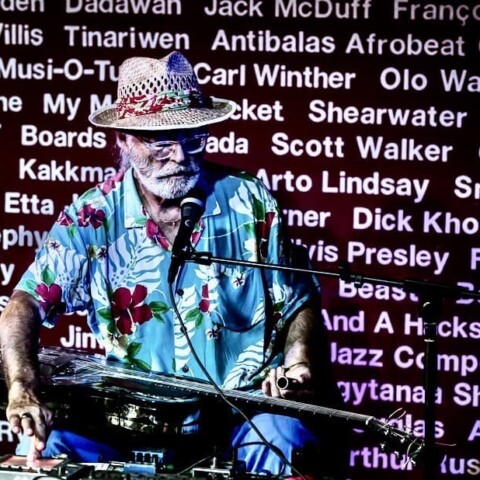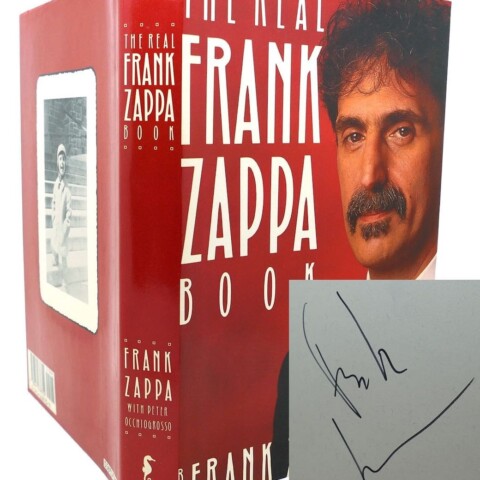Every day in May, to mark NZ Music Month, Gary Steel presents something local from his considerable behind. Personal archive, that is. Today’s surprise item?
NZ Music Quota
First published in the NZ Listener, November 12, 1990.
Stuff The Quota!

 DID ANYONE ACTUALLY watch TV3’s propagandist Rock The Quota concert-cum-documentary? Was anyone actually shamed into believing that the Kiwi talent on display had what it takes to compete with international radio fodder?
DID ANYONE ACTUALLY watch TV3’s propagandist Rock The Quota concert-cum-documentary? Was anyone actually shamed into believing that the Kiwi talent on display had what it takes to compete with international radio fodder?
Didn’t think so.
Mistake Number 1: The programme was based on budget-priced live performances. In contrast, modern radio is all about three-minute slices of record technology.
Mistake Number 2: Almost without exception, the featured groups played non-commercial rock. In contrast modern radio is about commercial pop.
Okay, The Bats are a brilliant left-field pop band on a good day, and Netherworld Dancing Toys had a big hit once, about five years ago. But boy, listen to them now! Give Putty some time and they may shape up, but Strikemaster? Tall Dwarfs?
Don’t get me wrong. New Zealand produces some of the most original music in the world. But whether it’s made or consumed here or elsewhere, the majority of our most interesting music will never be played on commercial radio, because it’s just not commercial. Most of the best music made anywhere won’t make it onto commercial radio.
Let’s forget about Rock The Quota. Let’s pretend that the 20 percent Kiwi quota is already in place. What could those devious radio programmers dig up to slot in between the endless MC Hammer and Mariah Carey?
 Unless there’s a radical shakeup on New Zealand radio, alternative and specialist Kiwi music will fall through the cracks. Local branches of international companies will finance their safest local bets to national stardom, and it’ll be product all the way to the bank. In other words, a nasty itchy rash of Fanclubs.
Unless there’s a radical shakeup on New Zealand radio, alternative and specialist Kiwi music will fall through the cracks. Local branches of international companies will finance their safest local bets to national stardom, and it’ll be product all the way to the bank. In other words, a nasty itchy rash of Fanclubs.
It would be nice to think that the popular end of the Flying Nun spectrum will get spun: The Bats and Straitjacket Fits. Not likely.
What’s wrong with this scenario? First, radio itself, which relentlessly pursues the profit motive, catering shamelessly to the lowest common denominator and ignoring the vast majority of serious music fans. Second, New Zealand pop. Its prime years were 1980 to 1984, when an identifiably Kiwi sound emerged, as characterised by the best of Split Enz, Dragon, Crowded House and Dave Dobbyn. What’s more, it was accessible, intelligent and had a healthy disrespect for any attempt at market segmentation.
 Whatever happened to New Zealand pop? Let us never forget that even Crowded House weren’t played on New Zealand radio until they hit the big time in the US of A. Radio must be blamed for the decimation of the local pop scene, with other, lesser factors contributing to the general malaise.
Whatever happened to New Zealand pop? Let us never forget that even Crowded House weren’t played on New Zealand radio until they hit the big time in the US of A. Radio must be blamed for the decimation of the local pop scene, with other, lesser factors contributing to the general malaise.
Pretend there’s a fantastic new band from Ruakaka. They’re commercial but uncompromised, full of potential but a little rough round the edges. The local branch of an international record giant likes them enough to invest a considerable sum to record an album. A nationwide tour is arranged to coincide with the album release. A single is sent to the radio stations.
Dear Mr Programmer has to make a special effort to listen to the thing because it’s not appearing on his US playlists and, because it’s an unknown quantity, he declines it. Their video get a couple of television spins, but it can’t compete with the glossy look of the overseas videos. Local rock critics give them patronising, jingoistic raves, which nobody takes seriously. Consequently, very few people have heard the record, and very few people turn up at the gigs, which are badly organised anyway. By the end of the tour, our talented band hate each other’s guts, and the record company want their guts for garters because they’re getting no return on their financial investment. Sorry, boys, back to the freezing works.
Years of neglect and discouragement have left the more creative end of the Kiwi pop spectrum undernourished and ill-equipped to deal with the prospect of a radio quota. If it does happen, the more willfully obscure bands can forget it. Radio is, for the most part, a commercial medium. All we can hope for is a miraculous influx of good Kiwi pop, or an incredible backtrack to the days of progressive radio, when it was a medium for those with open ears and a genuine way for music fans to turn onto new sounds.
Look at it this way: the only difference between Kiwi pop rubbish and American pop rubbish is that one earns money for our country when it’s exported. Both stink though, so it’s not an aesthetic difference.
 Footnote: Maybe there’s hope yet? As I write, New Zealander Ngaire’s Soul II Soul-ish rendering of the old Lulu hit ‘To Sir With Love’ is perched at the top of the singles charts. This must seem especially rich for Southside Records boss Murray Cammick, who has been pushing Kiwi pop for more than a decade in his own magazines. GARY STEEL
Footnote: Maybe there’s hope yet? As I write, New Zealander Ngaire’s Soul II Soul-ish rendering of the old Lulu hit ‘To Sir With Love’ is perched at the top of the singles charts. This must seem especially rich for Southside Records boss Murray Cammick, who has been pushing Kiwi pop for more than a decade in his own magazines. GARY STEEL
Note from the author: In the late 1980s and early ‘90s there was a push for a minimum quota for NZ music on commercial radio, which went down like a warm bucket of sick. As it should have. Interestingly, this column riffs on a subject that’s still raging now, even though so very much has changed. Unfortunately, the boffins who set up NZ On Air decided on a strategy that was commercially oriented rather than culturally oriented, leading to local music industry clogged with bands and artists writing and singing ‘original’ songs that were, to all intents and purposes, sound-a-like samples of overseas music trends designed specifically to get NZ On Air grants, and thus be matched with commercial radio. While the world wide web has meant a lessening of radio’s stranglehold on music (yay for that) and in many ways NZ music has really come of age over the past couple of decades (people actually like NZ pop now!) the essential problem remains: NZ On Air cash is spent based on industry, not artistic, prerogatives, which means that those artists who fall down the cracks between genres (that is, the really original ones) are dutifully ignored.
* Don’t forget to check out www.audioculture.co.nz after May 31, where you’ll find a vast repository of NZ music history.
















yeh,some fair comments here me old dolphinwaxer,but I did happen to see Strikemaster at Bodega in feb this year,An I still think they are one of the best 3 piece rockbands around!
Interesting point of view.
I was the original one who came up with the idea of rock the quota.
This was after IMPPA in Auckland didn’t want to assist, so I joined forces with three other guys.
The documentary in my mind did not represent the best of what we had.
Most of the bands in the doco are alternative and would never be heard on national radio except for the university radio stations.
I voiced my concern back then, but when you had Dick Driver being the voice of the docu and the purple lensman filming (RWP camera crews) it was always going to be left of centre.
It was not a budget show none of them were, we put in top of line production and plenty of it. Audio, lights etc.
Slamming it doesn’t do it justice, at least we tried something, raised significant media interest and the five shows all sold out.
The idea of the quota was inline with what was happening overseas, many countries had quotas. Where it failed with this push is that it went against the policy of freemarket enterprise and the old let the market decide saying.
But anyway what ever anyone says, it was filmed, editied and broadcast all 90 minutes which is not bad outcome.
Well Strikemaster put out a pretty good cd very recently.Not sure where all those other bands you got drunk on carrot juice and ran naked in fields of lavender with ended up.